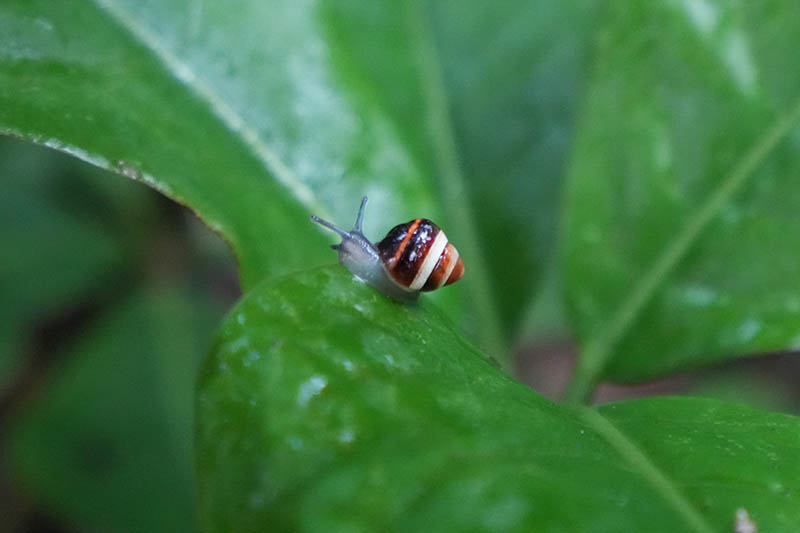The first batch of Achatinella fuscobasis, a rare and historically significant Hawaiian snail species, was recently released into the Honolulu Watershed Forest Reserve in the Ko’olau Mountains on O’ahu. This marked the species’ return to the wild after more than 33 years in captivity.
The release ceremony was attended by staff from the Department of Land and Natural Resources (DLNR) Snail Extinction Prevention Program (SEPP), as well as partners from the U.S. Fish and Wildlife Service, the University of Hawai’i (UH) at Mānoa, and the DLNR Division of Forestry and Wildlife (DOFAW). The event began with an oli (chant) led by Dr. Sam ʻOhu Gon, invoking protection and celebration for the snails’ return to their natural habitat.
Achatinella fuscobasis had likely disappeared from the Hawaiian landscape by 1991, when the last 11 individuals were collected by UH researcher Dr. Michael Hadfield from the only known populations on O’ahu. If not for the actions of Dr. Hadfield and other biologists who brought the snails into captivity, the species would have been lost forever.
Since then, the snail population has rebounded to over 1,000 individuals, housed at the SEPP lab in Pearl City. With the successful reintroduction, scientists are hopeful for the species’ future.
“This reintroduction is a symbol of recovery, and we’re optimistic that the species will thrive in the wild again,” said Dr. David Sischo, SEPP Coordinator. “These snails are not only important to our ecosystem but are also deeply tied to Hawaiian tradition in chant, hula, and lei-making.”
To support the snails’ transition, their new home is an exclosure—a predator-free, fenced quarter-acre plot. The site is equipped with five-foot-tall polyethylene walls, copper wire mesh, and a hood barrier to keep out introduced predators such as rats, Jackson’s chameleons, and the invasive rosy wolf snail, which have been the primary threats to native Hawaiian snails.
The habitat required approximately five years of preparation, during which SEPP staff, volunteers, and community partners spent more than 600 hours removing predators, clearing weeds, and restoring native plant species. This labor-intensive effort reflects the deep commitment to restoring the snails’ population and environment.
“Our long-term goal is to see thriving populations of Achatinella fuscobasis in the wild, where they belong,” Dr. Sischo added. “In the short term, this reintroduction is a significant step toward securing the species’ future.”
To further engage the public, Bishop Museum and the Honolulu Zoo will soon begin captively rearing Achatinella fuscobasis at new snail labs, allowing people to view the species up close.
A second release of Achatinella fuscobasis is planned for February 2025 as part of ongoing conservation efforts.
All images/video courtesy: DLNR

